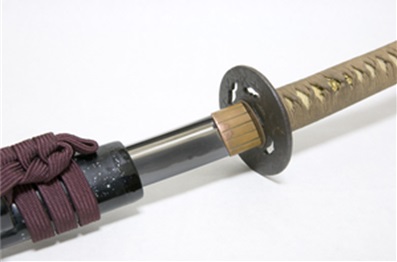2024.04.11
Columns/EssaysChu-chan's “Go Straight Towards Japanese Traditional Culture” 【Part2】 The Two Crises Faced by Japan's Traditional Crafts
Kondo Chuji = Director of Japan Traditional Culture Testing Association

“Japanese Sword (unsigned: Okachiyama Nagasada)" = Jiji Press Photo
Did you know that the traditional crafts that have given birth to Japan's “artisanal culture" and “artisanal techniques" have been on the verge of extinction twice in the last 150 years or so?
The first crisis was the Meiji Restoration, when the ruling class of samurai, who were the greatest patrons of traditional crafts and the only buyers of swords and armor, disappeared. The artisans of the time, for example swordsmiths became knife makers, and metalworkers who made metal ornaments for sword Tsuba (guards) and armor helmets, used their skills to make business card holders for men, and so on, produced everyday items, thus preserving the core techniques and values of traditional crafts.
The second crisis is far more serious. It is the Westernization of lifestyles, which continues to this day. Moreover, the progress of industrialization and population movement to large urban areas that accompanied the rapid economic growth since the 1960s has even changed the foundations of the lifestyle that was dominated by large families. This has led to the shift to nuclear families.
If it had only been Westernization, it may have been possible to overcome the crisis of the Meiji Restoration by creating new products that utilized the skills of artisans. However, with the trend toward nuclear families consisting of only a married couple and their children, the value of traditional crafts created by the “skills of artisans" itself was lost. In an era when families were breaking apart, there was no one to inherit the traditional crafts handed down from their ancestors, and the opportunities to appreciate, experience, and use them dramatically decreased.
Now, at a time when the global environmental crisis is being called into question, is the perfect time to help adults who have grown up surrounded by cheap, mass-produced plastic goods understand the beauty of “artisan culture" and pass it on to their children and grandchildren.
As mentioned in the previous article, Japanese traditional crafts respect nature and are created from nature, and they are friends with nature and do not destroy it during the manufacturing process, use, or even disposal. Their perfect sustainability will be a source of love not only in Japan, but all over the world. I believe that the upcoming “DENKEN-TEST" will help convey Japan's “Culture of Artisans" to many people.
Category: Columns/Essays




